Hach POCKET COLORIMETER II Manuel utilisateur
- Taper
- Manuel utilisateur

DOC022.97.80452
Pocket Colorimeter II Single
Wavelength
04/2014, Edition 1
User Manual
Manuel d'utilisation
Manual del usuario
Manual do Usuário
用户手册
取扱説明書
사용 설명서

English..................................................................................................3
Français..............................................................................................29
Español...............................................................................................57
Português............................................................................................85
中文 ...................................................................................................113
日本語 ...............................................................................................135
한글 ...................................................................................................161
2

Table of contents
Specifications on page 3 Operation on page 11
General information on page 4 Maintenance on page 25
Startup on page 7 Troubleshooting on page 26
User interface and navigation
on page 9
Replacement parts on page 27
Specifications
Specifications are subject to change without notice.
Specification Details
Dimensions (W x D x H) 6.1 x 3.2 x 15.2 cm (2.4 x 1.25 x 6 in.)
Enclosure IP67, waterproof at 1 m (3.3 ft) for 30 minutes (battery
compartment not included). Keep out of direct
sunlight.
Light source Light emitting diode (LED)
Detector Silicon photodiode
Display LCD with backlight
Weight 0.2 kg (0.43 lb)
Pollution degree 2
Installation category I
Protection class 3
Power requirements 4 AAA batteries; approximate life of 2000 tests (use of
backlight decreases this number)
Rechargeable batteries are not recommended.
Operating environment 0 to 50 °C (32 to 122 °F), 0 to 90% relative humidity
non-condensing
Storage temperature –20 to 55 °C (–7.6 to 131 °F)
Photometric precision ± 0.0015 Abs
Wavelength Fixed wavelength ±2 nm, different for each model
Filter bandwidth 15 nm
Absorbance range 0 to 2.5 Abs
English 3

Specification Details
Sample cell path length 1 cm (5–10 mL), 25 mm (10 mL)
Data storage Last 10 measurements
Certifications CE mark
Warranty 2 years
General information
In no event will the manufacturer be liable for direct, indirect, special,
incidental or consequential damages resulting from any defect or
omission in this manual. The manufacturer reserves the right to make
changes in this manual and the products it describes at any time,
without notice or obligation. Revised editions are found on the
manufacturer’s website.
Safety information
N O T I C E
The manufacturer is not responsible for any damages due to misapplication or
misuse of this product including, without limitation, direct, incidental and
consequential damages, and disclaims such damages to the full extent
permitted under applicable law. The user is solely responsible to identify critical
application risks and install appropriate mechanisms to protect processes
during a possible equipment malfunction.
Please read this entire manual before unpacking, setting up or
operating this equipment. Pay attention to all danger and caution
statements. Failure to do so could result in serious injury to the
operator or damage to the equipment.
Make sure that the protection provided by this equipment is not
impaired. Do not use or install this equipment in any manner other than
that specified in this manual.
Use of hazard information
D A N G E R
Indicates a potentially or imminently hazardous situation which, if not avoided,
will result in death or serious injury.
4 English

W A R N I N G
Indicates a potentially or imminently hazardous situation which, if not avoided,
could result in death or serious injury.
C A U T I O N
Indicates a potentially hazardous situation that may result in minor or moderate
injury.
N O T I C E
Indicates a situation which, if not avoided, may cause damage to the
instrument. Information that requires special emphasis.
Precautionary labels
Read all labels and tags attached to the instrument. Personal injury or
damage to the instrument could occur if not observed. A symbol on the
instrument is referenced in the manual with a precautionary statement.
This symbol, if noted on the instrument, references the instruction
manual for operation and/or safety information.
Electrical equipment marked with this symbol may not be disposed
of in European domestic or public disposal systems. Return old or
end-of-life equipment to the manufacturer for disposal at no charge
to the user.
Certification
Canadian Radio Interference-Causing Equipment Regulation,
IECS-003, Class A:
Supporting test records reside with the manufacturer.
This Class A digital apparatus meets all requirements of the Canadian
Interference-Causing Equipment Regulations.
Cet appareil numérique de classe A répond à toutes les exigences de
la réglementation canadienne sur les équipements provoquant des
interférences.
FCC Part 15, Class "A" Limits
English 5

Supporting test records reside with the manufacturer. The device
complies with Part 15 of the FCC Rules. Operation is subject to the
following conditions:
1. The equipment may not cause harmful interference.
2. The equipment must accept any interference received, including
interference that may cause undesired operation.
Changes or modifications to this equipment not expressly approved by
the party responsible for compliance could void the user's authority to
operate the equipment. This equipment has been tested and found to
comply with the limits for a Class A digital device, pursuant to Part
15 of the FCC rules. These limits are designed to provide reasonable
protection against harmful interference when the equipment is operated
in a commercial environment. This equipment generates, uses and can
radiate radio frequency energy and, if not installed and used in
accordance with the instruction manual, may cause harmful
interference to radio communications. Operation of this equipment in a
residential area is likely to cause harmful interference, in which case
the user will be required to correct the interference at their expense.
The following techniques can be used to reduce interference problems:
1. Move the equipment away from the device receiving the
interference.
2. Reposition the receiving antenna for the device receiving the
interference.
3. Try combinations of the above.
Product overview
The single wavelength Pocket Colorimeter II instruments are portable
filter photometers used for testing water, treated waters, wastewater,
estuary and seawater. Refer to Figure 1. The single wavelength
models are configured at the factory to measure at a specific
wavelength.
The single wavelength models have two channels in which
measurements can be made. Until a user-prepared calibration curve is
entered, the single wavelength instruments show only a direct readout
of absorbance. To measure concentration, enter a user-prepared
calibration curve. Refer to User-entered calibration on page 21.
6 English

Figure 1 Instrument overview
1 Instrument cap 3 Display
2 Cell holder 4 Keypad
Startup
Install the batteries
W A R N I N G
Explosion hazard. Incorrect battery installation can cause the release
of explosive gases. Be sure that the batteries are of the same
approved chemical type and are inserted in the correct orientation.
Do not mix new and used batteries.
Install the batteries as shown in Figure 2.
English 7

Figure 2 Install the batteries
8 English

Figure 4 Keypad
1 Power/Backlight key: Sets the
power to on and off. Push and hold
for 1 second to set the backlight to
on or off.
3 Menu key: Enters and goes out of
menu mode.
2 Zero/Scroll key: Sets the
instrument to zero, scrolls through
menu options and numbers
4 Read/Enter key: Starts a sample
measurement, selects a menu
option, moves the cursor to the
next digit
Display description
Figure 5 shows the values and icons shown on the display.
10 English

Figure 5 Display
1 Numeric display: Measured value
or menu options
4 Menu icon: The instrument is in
menu mode.
2 Range icon: Selected range or
parameter
5 Calibration adjusted icon: A user-
entered calibration curve was
entered.
3 Range value: Range(s) or
parameters
6 Low battery icon: Battery level is
10%. Flashes when the battery
level is too low to complete
measurements.
Operation
Configure the instrument
1. Push .
2. Push to scroll through the menu options. Push to select an
option.
Option Description
SEL Sets the measurement range or parameter. Push to toggle
between the measurement ranges or parameters.
00:00 Sets the time in 24-hour format (hh:mm). Push to change the
time. Push to change the first digit, then to go to the next
digit.
English 11

Option Description
rCL Shows the last 10 measurements recorded. Push to show the
recorded measurements (01—most recent measurement, 10—
oldest measurement). Push to scroll through the measurements.
To select a measurement by number, push to select the number
and then . Push to go out of this option.
SCA Not applicable to the single wavelength models.
3. Push to go back to measurement mode.
Measurement
Basic colorimetry
Colorimetry measures the amount of color in a clear medium, such as
a liquid, to identify the quantity of a particular substance (the analyte) in
the liquid. Typically, the concentration of the analyte is proportional to
the intensity of the color in the clear medium (solution). In most
methods, a darker color indicates a higher analyte concentration.
Absorbance (Abs) at a specific wavelength is typically used to measure
the amount of light absorbed by the solution. Absorbance (Abs) is
calculated as:
Abs = –log T or Abs = –log (I
T
/I
O
)
Where:
T = transmittance
I
T
= intensity of the light transmitted through the sample
I
O
= intensity of the light that enters the sample
Some substances, such as dyes and different metal ions, have
inherent color and can be measured without any additions. In most
cases, a chemical reaction between an indicator and the analyte is
necessary to get a colored product that can be measured.
Once the relationship between the amount of color (measured as
absorbance) and a known concentration of a sample is identified, the
instrument can be used to measure concentrations of unknown
samples. A user-entered calibration curve is used to measure the
sample concentration.
To identify the amount of color in a sample, the instrument measures
the amount of light the solution absorbs. The absorption of light is
dependent on the wavelength of the light and the color of the solution.
12 English

The combination of an LED light source and an interference filter sets
the measurement wavelength.
Select the best wavelength
The single wavelength instruments each have a different LED and
interference filter to measure at a specific wavelength.
The wavelength (color) of light used is typically selected so that it has a
maximum absorption, but other wavelengths can be selected to
minimize interferences or other factors. For the best results, select the
instrument wavelength with knowledge about the absorbance spectra
of the species of interest, as well as the spectra of other colored
species that could be in the sample. Figure 6 shows a typical
absorption spectrum.
Refer to Table 1 to select the best instrument wavelengths to use for
testing. Do not use this table for samples that have more than one
absorption region that adds to the visible color. For example, a green
solution can have a yellow and a blue absorption peak. One or the
other peak can be used for measurements if both have different
analyte concentration. Other samples can look brown because there
are several spectra that add to the visible color.
English 13

Figure 6 Select the best wavelength – sample spectrum
1 Absorbance 2 Wavelength (nm)
Table 1 Light wavelength and color
Sample color Light absorbed Wavelength (nm)
Yellow-green Violet 420
Yellow Violet-blue 450
Orange Blue 476
Orange-red Blue-green 500
Red Green 528
Red-violet Yellow-green 550
14 English

Table 1 Light wavelength and color (continued)
Sample color Light absorbed Wavelength (nm)
Blue Yellow 580
Green-blue Orange 600
Blue-green Red 655
Measurement range
The measurement range of the instrument is 0 to approximately
1.50 Abs, but can be used up to a measurement range of 2.5 Abs if the
chemistry method supports that range.
If sample absorbances are more than 1.50 Abs:
1. Dilute the sample or use smaller sample cells for the best linearity
and accuracy.
2. If a smaller sample cell such as the 1-cm (10-mL) cell is used,
complete the calibration with the smaller sample cells.
Note: Absorbance increases with the increase of the sample cell pathlength.
Use a sample cell with a shorter pathlength to measure solutions with a
darker colored.
3. Monitor the calibration curve to identify the measurement range for
a specific test.
The measurement range is the concentration range in which the
deviation from linearity is within acceptable limits.
Calibration curve
Calibration curves should ideally intersect the zero intercept for
absorbance. The zero intercept is the zero concentration point on the
calibration graph. When there is no analyte in the sample, the
absorbance will be zero.
A non-zero intercept (a positive or negative absorbance measurement
at zero concentration) can occur for many reasons. Factors that can
cause a non-zero intercept include the reagent blank, pH, temperature,
interfering species or turbidity differences between the zeroing solution
(blank) and the sample.
To adjust for a non-zero intercept caused by the reagent blank,
measure the absorbance of the prepared reagent blank and then
subtract it from the measured absorbance of the prepared sample. In
English 15

an aqueous sample, add the reagents to deionized water to prepare
the reagent blank. The prepared reagent blank includes only the
amount of color that is added to the deionized water by the reagent and
not the analyte. The prepared sample includes the amount of color that
is added by the reagent and the analyte.
For some chemistries, the intensity of the color decreases as the
analyte concentration increases. These chemistries are referred to as
bleaching chemistries because the measured sample is lighter in color
than the reagent blank that was used to zero the instrument. This
instrument is able to measure bleaching (or negative) absorbance
chemistries directly. Set the instrument zero with the reagent blank (the
most highly colored solution) and then read the sample or bleached
color directly.
Single wavelength procedure
Before starting
Always measure solutions in sample cells or AccuVac
®
Ampules. Do not put
the instrument in the sample or pour the sample into the cell holder.
Make sure that the sample cells are clean and there are no scratches where
the light passes through them.
Make sure that there are no fingerprints or liquid on the external surface of the
sample cells or AccuVac
®
Ampules. Wipe with a lint-free cloth.
Rinse the sample cell and cap with the sample three times before the sample
cell is filled.
Always insert the sample cell in the correct and consistent orientation so that
the results are more repeatable and precise. Refer to Figure 7.
Install the instrument cap over the cell holder before ZERO or READ is
pushed. Refer to Figure 8.
Measure the volume of the liquid reagent accurately. Use a pipet if possible.
If the test result is over-range, dilute a fresh sample with a known volume of
deionized water and repeat the test. Multiply the result by the dilution factor.
When the test is completed, immediately empty and rinse the prepared sample
cell. Rinse the sample cell and cap three times.
16 English

Review the Safety Data Sheets (MSDS/SDS) for the chemicals that are used.
Use the recommended personal protective equipment.
Dispose of reacted solutions according to local, state and federal regulations.
Refer to the Safety Data Sheets for disposal information for unused reagents.
Refer to the environmental, health and safety staff for your facility and/or local
regulatory agencies for further disposal information.
Figure 7 Sample cell orientation
1 Orientation mark 2 Sample cell, 25-mm (10 mL)
English 17

Figure 8 Install the instrument cap over the cell holder
Sample collection
• Collect samples in clean glass or plastic bottles.
• Rinse the sample bottle several times with the sample to be
collected.
• Analyze the samples as soon as possible for best results.
• Homogenize samples that contain solids to get a representative
sample.
18 English

• Filter samples that are turbid with filter paper and a funnel.
Reagent solution procedure
1. Select the range that
has a saved user
calibration. Refer to
Configure the
instrument on page 11.
Note: To enter a user
calibration, refer to
User-entered calibration
on page 21.
2. Prepare the blank:
Fill the sample cell with
10 mL of the blank
solution (typically
sample).
3. Clean the blank
sample cell.
4. Insert the blank into
the cell holder in the
correct orientation.
Refer to Figure 7
on page 17.
5. Install the instrument
cap over the cell holder.
6. Push ZERO. The
display shows “0.000”,
or the degree of
resolution that was
previously selected.
English 19

7. Remove the sample
cell from the cell holder.
8. Prepare the
sample: Fill a second
sample cell with 10 mL
of sample.
9. Add the reagent to
the second sample cell.
Wait the specified
reaction time for full
color development if
applicable.
10. Clean the prepared
sample cell.
11. Insert the prepared
sample into the cell
holder in the correct
orientation. Refer to
Figure 7 on page 17.
12. Install the
instrument cap over the
cell holder.
20 English
La page est en cours de chargement...
La page est en cours de chargement...
La page est en cours de chargement...
La page est en cours de chargement...
La page est en cours de chargement...
La page est en cours de chargement...
La page est en cours de chargement...
La page est en cours de chargement...
La page est en cours de chargement...
La page est en cours de chargement...
La page est en cours de chargement...
La page est en cours de chargement...
La page est en cours de chargement...
La page est en cours de chargement...
La page est en cours de chargement...
La page est en cours de chargement...
La page est en cours de chargement...
La page est en cours de chargement...
La page est en cours de chargement...
La page est en cours de chargement...
La page est en cours de chargement...
La page est en cours de chargement...
La page est en cours de chargement...
La page est en cours de chargement...
La page est en cours de chargement...
La page est en cours de chargement...
La page est en cours de chargement...
La page est en cours de chargement...
La page est en cours de chargement...
La page est en cours de chargement...
La page est en cours de chargement...
La page est en cours de chargement...
La page est en cours de chargement...
La page est en cours de chargement...
La page est en cours de chargement...
La page est en cours de chargement...
La page est en cours de chargement...
La page est en cours de chargement...
La page est en cours de chargement...
La page est en cours de chargement...
La page est en cours de chargement...
La page est en cours de chargement...
La page est en cours de chargement...
La page est en cours de chargement...
La page est en cours de chargement...
La page est en cours de chargement...
La page est en cours de chargement...
La page est en cours de chargement...
La page est en cours de chargement...
La page est en cours de chargement...
La page est en cours de chargement...
La page est en cours de chargement...
La page est en cours de chargement...
La page est en cours de chargement...
La page est en cours de chargement...
La page est en cours de chargement...
La page est en cours de chargement...
La page est en cours de chargement...
La page est en cours de chargement...
La page est en cours de chargement...
La page est en cours de chargement...
La page est en cours de chargement...
La page est en cours de chargement...
La page est en cours de chargement...
La page est en cours de chargement...
La page est en cours de chargement...
La page est en cours de chargement...
La page est en cours de chargement...
La page est en cours de chargement...
La page est en cours de chargement...
La page est en cours de chargement...
La page est en cours de chargement...
La page est en cours de chargement...
La page est en cours de chargement...
La page est en cours de chargement...
La page est en cours de chargement...
La page est en cours de chargement...
La page est en cours de chargement...
La page est en cours de chargement...
La page est en cours de chargement...
La page est en cours de chargement...
La page est en cours de chargement...
La page est en cours de chargement...
La page est en cours de chargement...
La page est en cours de chargement...
La page est en cours de chargement...
La page est en cours de chargement...
La page est en cours de chargement...
La page est en cours de chargement...
La page est en cours de chargement...
La page est en cours de chargement...
La page est en cours de chargement...
La page est en cours de chargement...
La page est en cours de chargement...
La page est en cours de chargement...
La page est en cours de chargement...
La page est en cours de chargement...
La page est en cours de chargement...
La page est en cours de chargement...
La page est en cours de chargement...
La page est en cours de chargement...
La page est en cours de chargement...
La page est en cours de chargement...
La page est en cours de chargement...
La page est en cours de chargement...
La page est en cours de chargement...
La page est en cours de chargement...
La page est en cours de chargement...
La page est en cours de chargement...
La page est en cours de chargement...
La page est en cours de chargement...
La page est en cours de chargement...
La page est en cours de chargement...
La page est en cours de chargement...
La page est en cours de chargement...
La page est en cours de chargement...
La page est en cours de chargement...
La page est en cours de chargement...
La page est en cours de chargement...
La page est en cours de chargement...
La page est en cours de chargement...
La page est en cours de chargement...
La page est en cours de chargement...
La page est en cours de chargement...
La page est en cours de chargement...
La page est en cours de chargement...
La page est en cours de chargement...
La page est en cours de chargement...
La page est en cours de chargement...
La page est en cours de chargement...
La page est en cours de chargement...
La page est en cours de chargement...
La page est en cours de chargement...
La page est en cours de chargement...
La page est en cours de chargement...
La page est en cours de chargement...
La page est en cours de chargement...
La page est en cours de chargement...
La page est en cours de chargement...
La page est en cours de chargement...
La page est en cours de chargement...
La page est en cours de chargement...
La page est en cours de chargement...
La page est en cours de chargement...
La page est en cours de chargement...
La page est en cours de chargement...
La page est en cours de chargement...
La page est en cours de chargement...
La page est en cours de chargement...
La page est en cours de chargement...
La page est en cours de chargement...
La page est en cours de chargement...
La page est en cours de chargement...
La page est en cours de chargement...
La page est en cours de chargement...
La page est en cours de chargement...
La page est en cours de chargement...
La page est en cours de chargement...
La page est en cours de chargement...
La page est en cours de chargement...
La page est en cours de chargement...
La page est en cours de chargement...
La page est en cours de chargement...
La page est en cours de chargement...
La page est en cours de chargement...
La page est en cours de chargement...
La page est en cours de chargement...
La page est en cours de chargement...
-
 1
1
-
 2
2
-
 3
3
-
 4
4
-
 5
5
-
 6
6
-
 7
7
-
 8
8
-
 9
9
-
 10
10
-
 11
11
-
 12
12
-
 13
13
-
 14
14
-
 15
15
-
 16
16
-
 17
17
-
 18
18
-
 19
19
-
 20
20
-
 21
21
-
 22
22
-
 23
23
-
 24
24
-
 25
25
-
 26
26
-
 27
27
-
 28
28
-
 29
29
-
 30
30
-
 31
31
-
 32
32
-
 33
33
-
 34
34
-
 35
35
-
 36
36
-
 37
37
-
 38
38
-
 39
39
-
 40
40
-
 41
41
-
 42
42
-
 43
43
-
 44
44
-
 45
45
-
 46
46
-
 47
47
-
 48
48
-
 49
49
-
 50
50
-
 51
51
-
 52
52
-
 53
53
-
 54
54
-
 55
55
-
 56
56
-
 57
57
-
 58
58
-
 59
59
-
 60
60
-
 61
61
-
 62
62
-
 63
63
-
 64
64
-
 65
65
-
 66
66
-
 67
67
-
 68
68
-
 69
69
-
 70
70
-
 71
71
-
 72
72
-
 73
73
-
 74
74
-
 75
75
-
 76
76
-
 77
77
-
 78
78
-
 79
79
-
 80
80
-
 81
81
-
 82
82
-
 83
83
-
 84
84
-
 85
85
-
 86
86
-
 87
87
-
 88
88
-
 89
89
-
 90
90
-
 91
91
-
 92
92
-
 93
93
-
 94
94
-
 95
95
-
 96
96
-
 97
97
-
 98
98
-
 99
99
-
 100
100
-
 101
101
-
 102
102
-
 103
103
-
 104
104
-
 105
105
-
 106
106
-
 107
107
-
 108
108
-
 109
109
-
 110
110
-
 111
111
-
 112
112
-
 113
113
-
 114
114
-
 115
115
-
 116
116
-
 117
117
-
 118
118
-
 119
119
-
 120
120
-
 121
121
-
 122
122
-
 123
123
-
 124
124
-
 125
125
-
 126
126
-
 127
127
-
 128
128
-
 129
129
-
 130
130
-
 131
131
-
 132
132
-
 133
133
-
 134
134
-
 135
135
-
 136
136
-
 137
137
-
 138
138
-
 139
139
-
 140
140
-
 141
141
-
 142
142
-
 143
143
-
 144
144
-
 145
145
-
 146
146
-
 147
147
-
 148
148
-
 149
149
-
 150
150
-
 151
151
-
 152
152
-
 153
153
-
 154
154
-
 155
155
-
 156
156
-
 157
157
-
 158
158
-
 159
159
-
 160
160
-
 161
161
-
 162
162
-
 163
163
-
 164
164
-
 165
165
-
 166
166
-
 167
167
-
 168
168
-
 169
169
-
 170
170
-
 171
171
-
 172
172
-
 173
173
-
 174
174
-
 175
175
-
 176
176
-
 177
177
-
 178
178
-
 179
179
-
 180
180
-
 181
181
-
 182
182
-
 183
183
-
 184
184
-
 185
185
-
 186
186
-
 187
187
-
 188
188
Hach POCKET COLORIMETER II Manuel utilisateur
- Taper
- Manuel utilisateur
dans d''autres langues
Documents connexes
-
Hach DR300 Manuel utilisateur
-
Hach DR300 Manuel utilisateur
-
Hach DR300 Manuel utilisateur
-
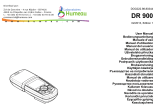 Hach LANGE DR 900 Manuel utilisateur
Hach LANGE DR 900 Manuel utilisateur
-
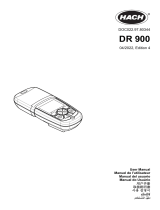 Hach DR 900 Multiparameter Portable Colorimeter Manuel utilisateur
Hach DR 900 Multiparameter Portable Colorimeter Manuel utilisateur
-
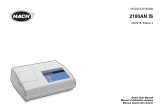 Hach 2100AN Basic User Manual
Hach 2100AN Basic User Manual
-
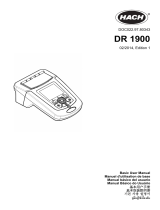 Hach DR 1900 Basic User Manual
Hach DR 1900 Basic User Manual
-
Hach LANGE DR 900 Manuel utilisateur
-
Hach SP-510 Basic User Manual
-
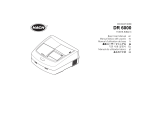 Hach DR 6000 Basic User Manual
Hach DR 6000 Basic User Manual

































































































































































































